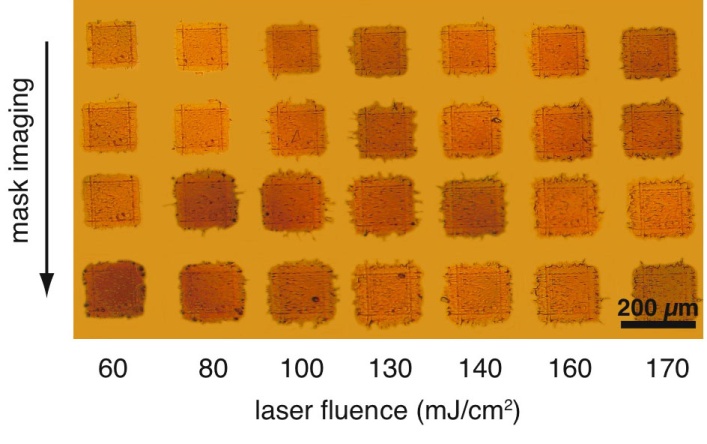
Development of hybrid organic/inorganic thin-film transistors with top and bottom-contact configuration using semiconducting polymers (P3HT, PQT12, PBTTT) deposited by means of the solid-phase Laser Induced Forward Transfer (LIFT) technique. Semiconducting pixels and lines were Laser printed onto pre-deposited source and drain electrodes formed on silicon dioxide/p+-type Si substrate. The transfer characteristics exhibited well-defined sub-threshold, linear and saturation regimes designating LIFT as a promising technique for hybrid organic/inorganic transistor technology.
The laser printing of both silver source (S) and drain (D) electrodes and semiconducting organic layer (P3HT) resulting in operating OTFT devices was also successful.

LIFT technique has also the ability to print multilayer films in a single step approach for the realization of organic thin film transistors (OTFTs) in top gate configuration. The main advantage of printing multilayer film in a single step is the guarantee of keeping all the initial properties of the interfaces between the different layers. The risk of damaging the layers is also strongly reduced.

